2 July 1778 Thursday
. . . . . .
Artifacts of the Bianconi vs Piranesi 'Circus of Caracalla' affair 1772-1789
7. Today's artifact is Piranesi's Caracalla circus site plan and much of what I've already written about it. The question now is whether it took Piranesi from at least early 1775 to mid-1778 to figure out decisively the asymmetrical formula for the starting of the circus race plan. Are the two extant states of the plan--completely identical except the latter state circus plan is dimensioned--indeed 1778 culminations of data intermittently gathered over the four prior years?
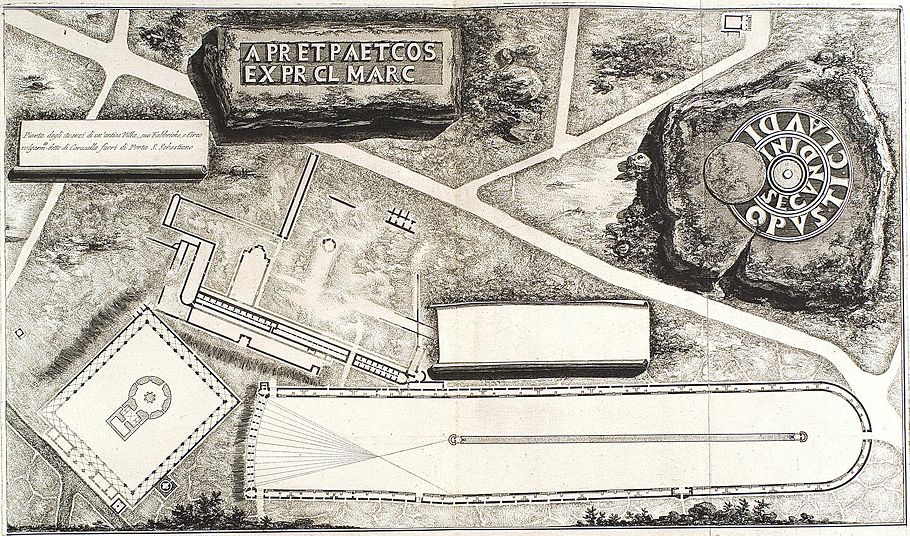
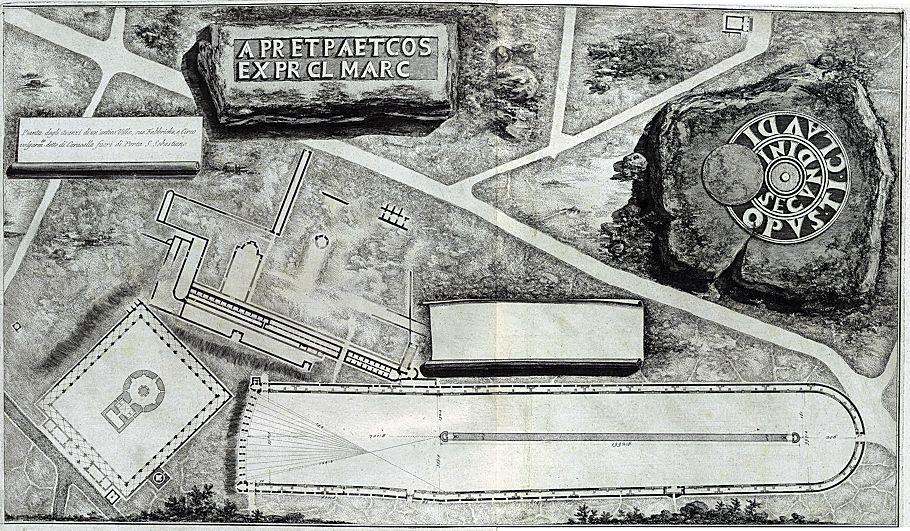
Bianconi, more than likely, first saw earlier states of this plan, and perhaps never even saw the lastest developed versions; hence, the 'mystery'?
46 y.o. Francesco Piranesi 1804
Le Antichità della Magna Grecia Parte I
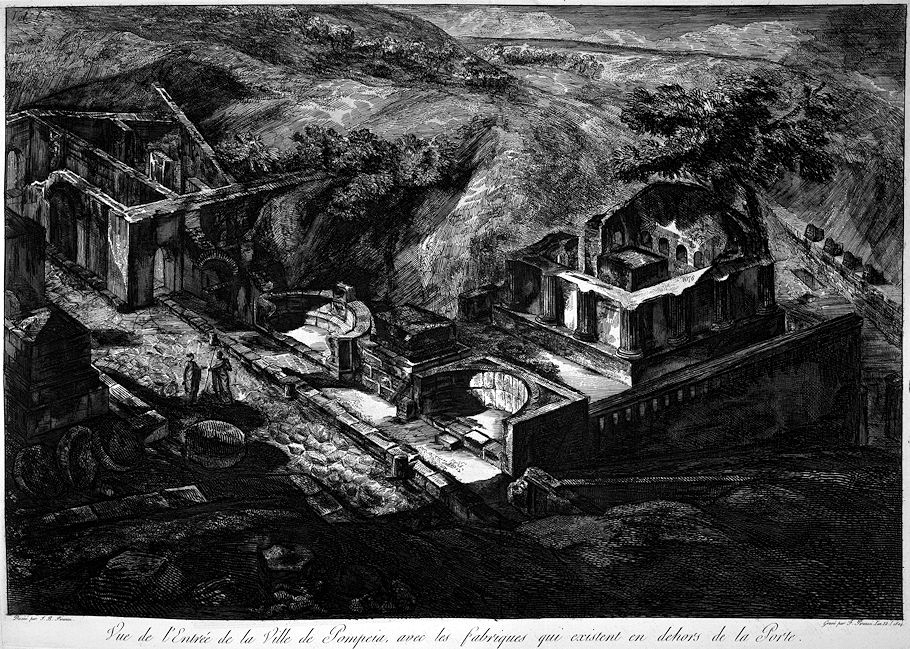
View of the Entrance to the City of Pompeii, with the structures that exist outside the Gate.
Drawn by G.B. Piranesi
Engraved by F. Piranesi Year 12 (1804)
2 July 1812 Thursday
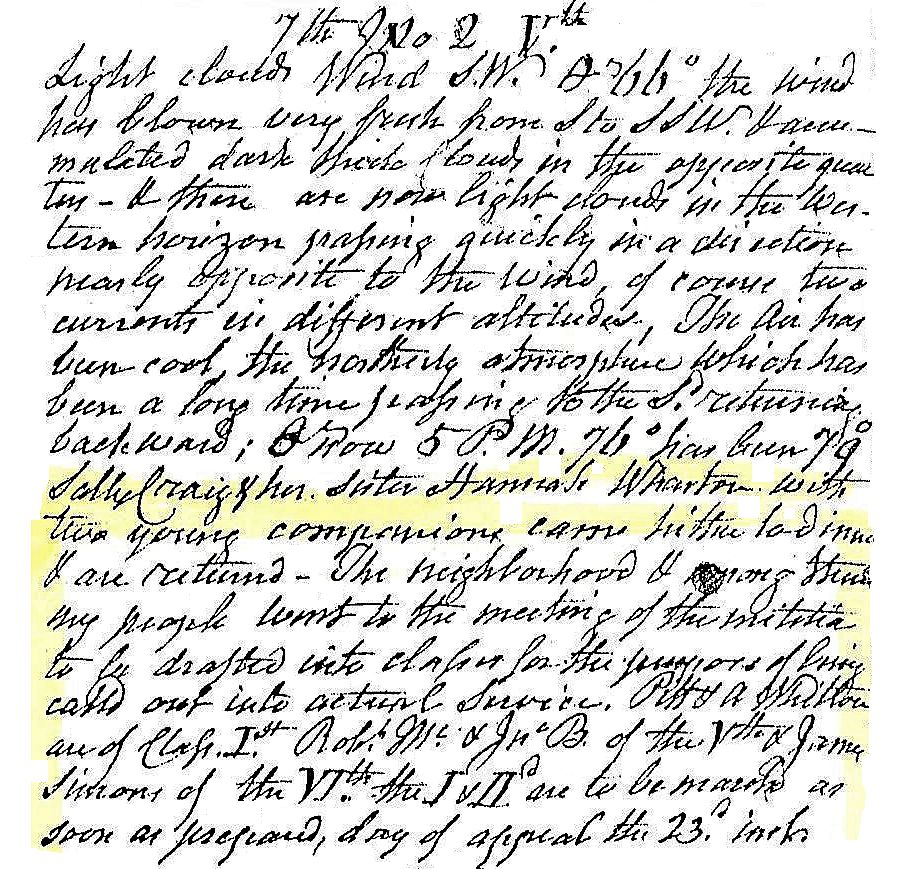
Light clouds, wind SW, temperature 66°. The wind has blown very fresh from S to SSW and accumulated dark thick clouds in the opposite quarter. And there are now light clouds in the western horizon passing quickly in a direction opposite to the wind, of course, two currents in different altitudes. The air has been cool, the northerly atmosphere which has been a long time passing to the S returning backwards. Temperature now 5 PM 76°, has been 79°. Sally Craig and her sister Hannah Wharton with two young companions came hither to dinner and are returned. The neighborhood and among them my people went to the meeting of the militia to be drafted into classes for the purpose of being called out into actual service. Pitt and Whilton are of Class 1st, Robert Mc and J. B. of the 5th, and James Simons of the 6th. The 1st and 2nd are to be marched as soon as prepared, day of appeal the 23rd ....
2 July 2015
Why are people so fascinated with classical architecture?
Volunteer, all you're doing is confusing the issue, which, as far as I'm concerned, is architectural design manifestations of the Classical Ideal in the 21st century.
Read your Harbeson to see/learn how size, scale and proportion need to work in tandem.
Generally, I agree with tintt and Miller in calling out historical examples of architecture in terms of their respective periods and styles, instead of naming anything with a classical order, pediment or some moldings as 'classical'. Antique classical architecture pretty much ended with the reign of Maxentius in Rome. And, while Maxentius was ruling in Rome, Constantine was ruling in Treves (today's Trier, Germany), and we see there the beginnings of 'Roman' architecture exhibiting a strong influence from the eastern half of the Empire (you can even say the very roots of Romanesque). The first half of the 4th century comprised a huge paradigm shift in 'Roman' architecture, not least of which was the moving of the Imperial capital to Constantinople. This is where Seroux d'Agincourt's The History of Art through Its Monuments from Its Decline in the Fourth Century to Its Renewal in the Sixteenth starts off--'middle-aged' European architecture is remarkably exuberant.
And for a concise overview of 'size, scale and proportion' see the Grande Durand, where all the plans are at the same scale and all the elevations are at the same scale (but all the elevations are twice the scale of their respective plans).
2 July 2017
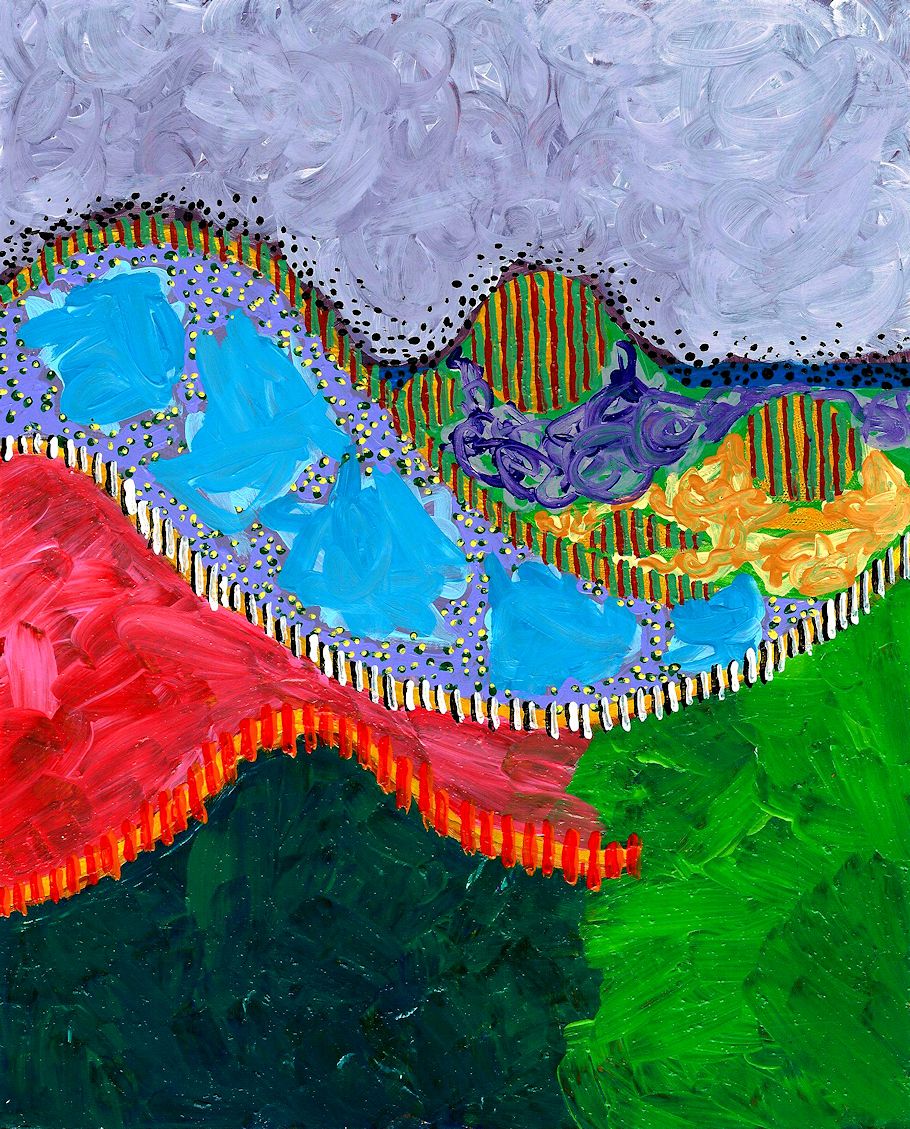
zero six two
2 July 2023 Sunday Moscow/Plokhov
. . . . . .
2 July 2023 Sunday Philadelphia/Lauf
Hopefully, "coincidence and simultaneity all in one for the next four months.”
|